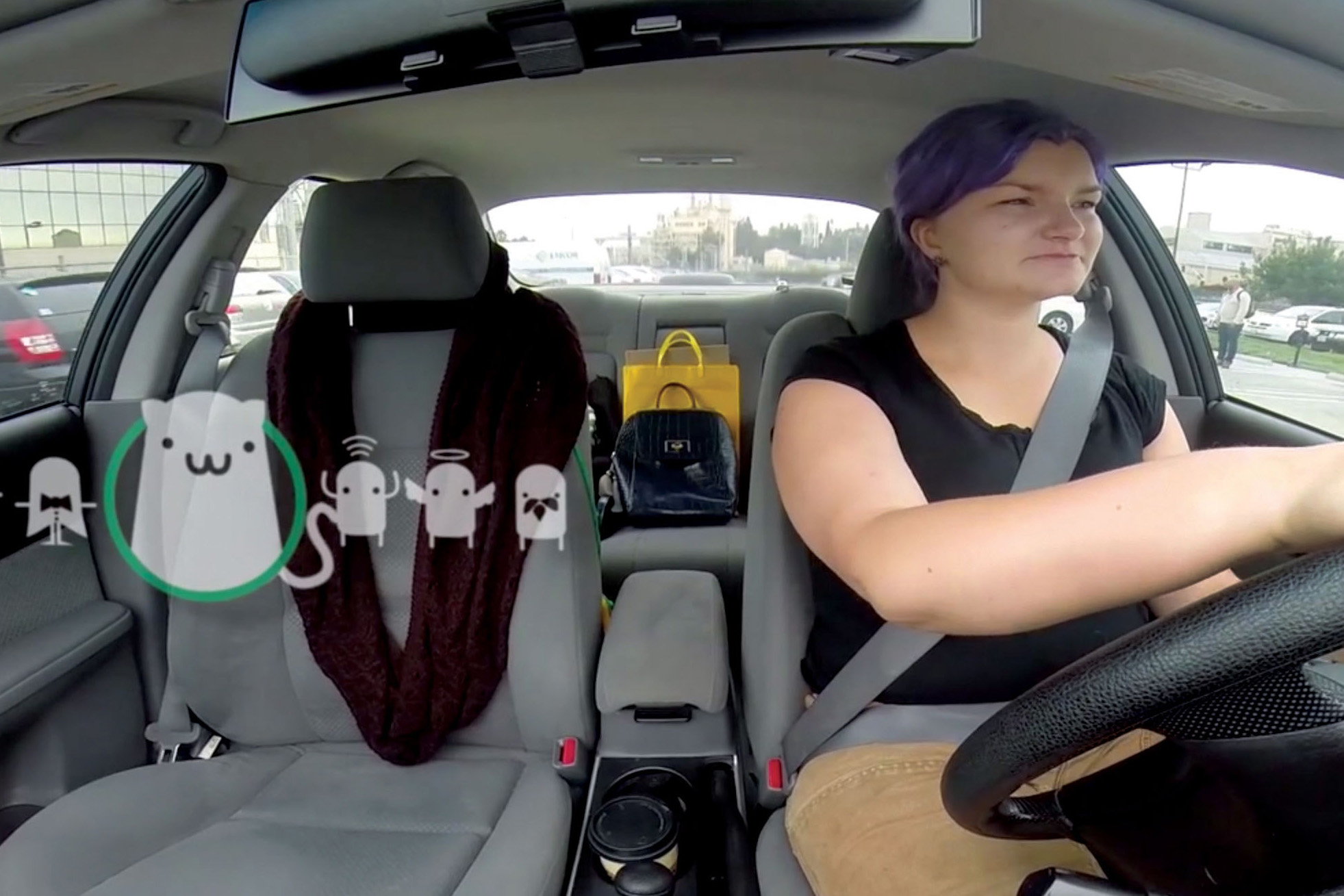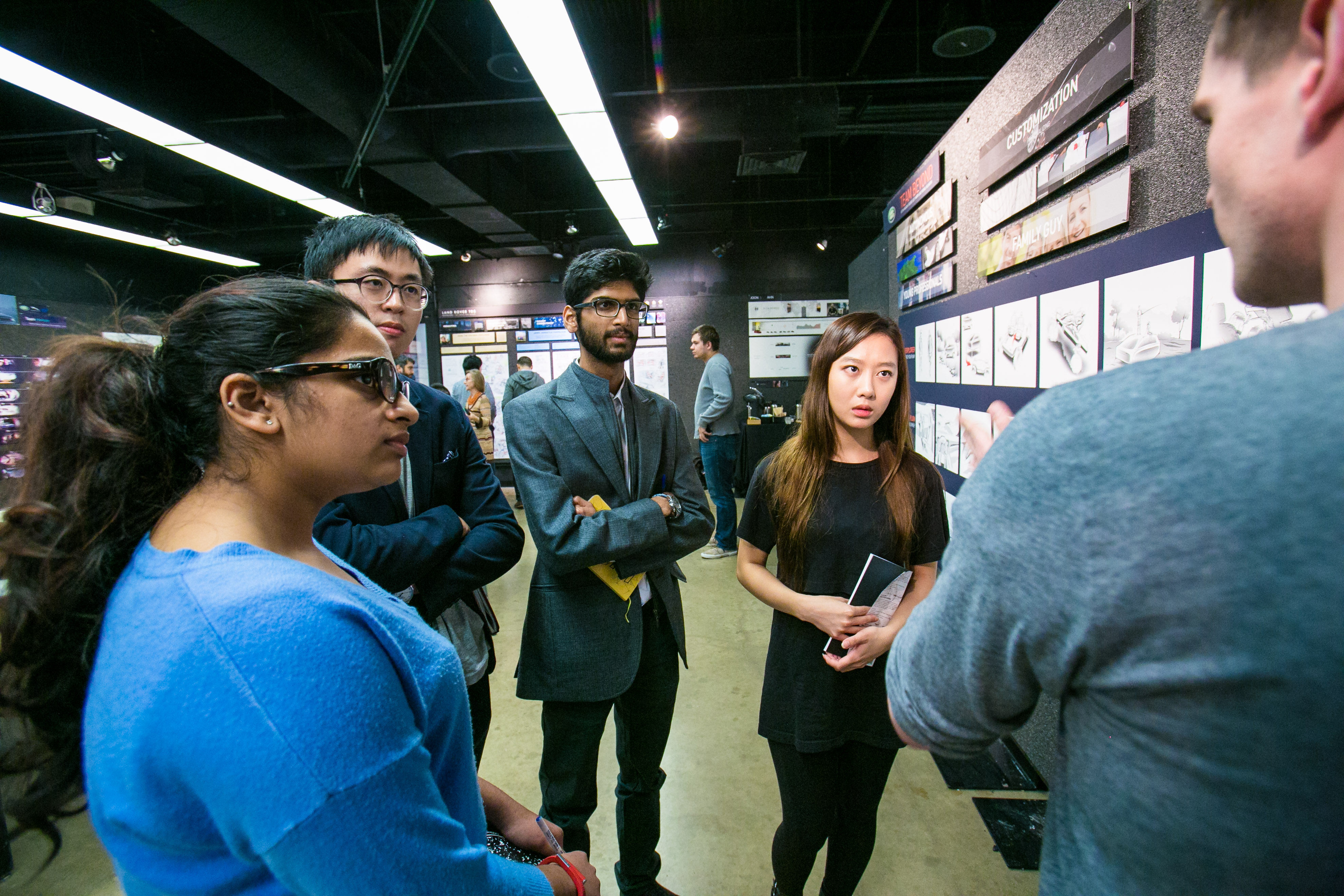
feature / faculty / students / transportation-design
June 03, 2015
Writer: Mike Winder
Autonomous for the people: cars of the future will need to balance new features with safety
Last week, Chevrolet announced that more than a dozen of its 2016 cars and trucks would be compatible with Apple’s CarPlay and Google’s Android Auto, the tech giants’ competing in-dash interfaces for vehicles that connect to the driver’s smartphone.
Considering both CarPlay and Android Auto were only publicly announced last year, the speed of Chevrolet’s adoption of these interfaces could signal a sea change in how quickly automakers respond to consumers’ demands.
Geoff Wardle, executive director of ArtCenter’s graduate Transportation Systems and Design program, says Silicon Valley’s forays into the transportation arena have lit the proverbial fire under Detroit.
“Traditionally the car industry has designed vehicles over a three- to four-year time period,” says Wardle. “But people want the same features in their cars that they have on their smartphones, which change every few months.”
People want the same features in their cars that they have on their smartphones, which change every few months.
Geoff WardleExecutive Director, Graduate Transportation Systems and Design
The ubiquity and popularity of smartphones also explains why automakers are gravitating toward touchscreens for their dashboard interfaces. But Maggie Hendrie, chair of the College’s Interaction Design Department, advocates a different approach.
“As a designer, I’m concerned when people take an analogy and turn it into a literal translation,” says Hendrie, who joined a panel of experts at last fall’s L.A. Auto Show discussing the car’s connected future. “It’s disappointing that rather than going through the proper design cycles, the process is reduced to Well, people love their smartphones so let’s add touch screens.”
Hendrie, who also teaches studios in the graduate transportation design program, makes her students prototype repeatedly—using processes as simple as placing cut-up pieces of cardboard inside a car’s interior—until they arrive at an intuitive solution that proves a proposed feature would offer true functionality.
And in a time when driving while distracted has become a serious problem—watch Werner Herzog’s cautionary documentary From One Second to the Next if you need a refresher—true functionality is the name of the game.
I’m concerned when people take an analogy and turn it into a literal translation. It’s disappointing when the design process is reduced to people love smartphones, let’s add touch screens.
Maggie HendrieChair, Interaction Design Department

Which makes Wardle invoke the age-old adage: Just because you can do something, does that mean you should?
It’s an ethical question that has long plagued auto makers, especially when it comes to integrating new features—whether it was cassette players in the mid-’70s or GPS navigation systems in the early 2000s.
“Manufacturers say, Well, it’s what people want and if we don’t supply it they’ll buy our competitor’s vehicles,” says Wardle. “That’s not going to change anytime soon.”
He adds that the danger of talking on the phone in the car is “not that you have one hand on the wheel and the other on the phone, but rather that your attention is not on the act of driving.”
This inattention is killing us. According to “Beyond Traffic 2045,” a framework unveiled by the U.S. Department of Transportation (DOT) this past February at Google’s headquarters, unsafe driving, which includes distracted driving, was partly or totally to blame for 90% of all accidents on the road.
At last month’s Autospaces 2025 event hosted by ArtCenter, Edward Fok, a transportation technologies specialist with the Federal Highway Administration, pointed out that 30,000 individuals in the United States die each year in auto accidents.
Fok added that emerging technology for connected vehicles—advanced collision warning systems, emergency electronic brake lights, curve detection systems—can improve that statistic by improving human reactions. He also cautioned looking to autonomous vehicles as a silver bullet to solve all our transportation woes.
“Part of the problem is that we have a baseline assumption about how people drive and how people use the infrastructure,” Fok told the assembled audience in the Wind Tunnel. “That will all get thrown out the window once we have automated vehicles. We have no idea what the usage is going to look like then.”
But Fok recommends keeping a close eye on the autonomous Mercedes Future Truck 2025, “That’s probably going to be the first demonstration of the benefits of these kinds of systems.”
We talk about automation as though it’s magic. It’s not. It’s a set of algorithms.
Maggie HendrieChair, Interaction Design Department
Though it sounds a bit sci-fi, technology is quickly approaching the point where we might feel safer trusting an autonomous vehicle than the human sitting behind the wheel.
But, as Hendrie points out, somebody still needs to code that autonomous vehicle to make sure it has built-in overt decision making that takes into account policy, safety, insurance and economic factors.
Says Hendrie, “We talk about automation as though it’s magic. But it’s not. It’s a set of algorithms.”




